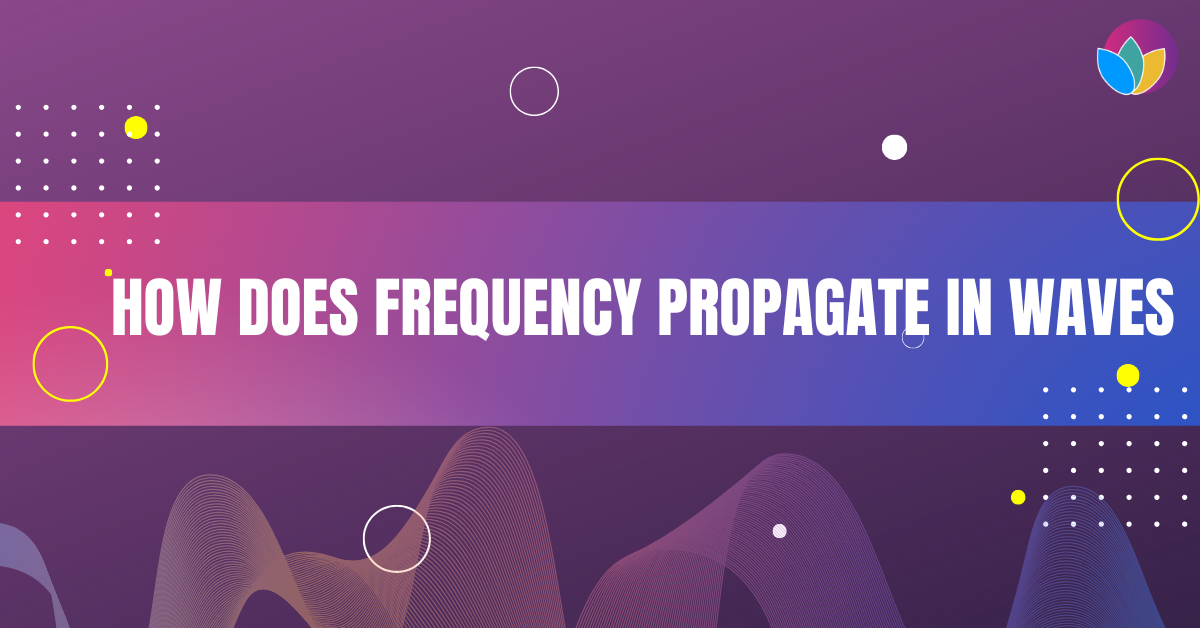Introduction
Frequency is a fundamental property of waves that determines how energy moves through different mediums. While we often associate frequency with sound or radio signals, it plays a crucial role in many natural and technological processes. This article explores how frequency affects wave propagation in different types of waves, including sound waves, light waves, and electromagnetic waves like WiFi and 5G signals.
1. Understanding Waves and Frequency
What is a Wave?
A wave is a repeating disturbance that transfers energy through a medium (such as air or water) or even through space (such as light and radio waves). Waves can be characterized by:
Frequency (f): The number of wave cycles per second, measured in Hertz (Hz).
Wavelength (λ): The distance between successive peaks of a wave.
Amplitude: The height of the wave, which determines energy intensity.
Wave Speed (v): The rate at which a wave propagates, calculated by the equation:
- v=fλ
Types of Waves:
- Mechanical Waves: Require a medium (air, water, solid) to propagate. Examples: sound waves, ocean waves.
- Electromagnetic Waves: Do not require a medium and can travel through a vacuum. Examples: light, radio waves, microwaves.
- Longitudinal vs. Transverse Waves:
- Longitudinal Waves: Oscillate parallel to the direction of travel (e.g., sound waves).
- Transverse Waves: Oscillate perpendicular to the direction of travel (e.g., light waves, radio waves).

Illustration: Different wave properties (frequency, wavelength, amplitude).
2. Sound Waves: How Frequency Affects What We Hear
Sound as a Mechanical Wave
Sound waves are longitudinal waves that travel by compressing and expanding particles in a medium. Their speed depends on the density and elasticity of the medium:
- Air: ~343 m/s (1,235 km/h) at room temperature.
- Water: ~1,500 m/s (4,828 km/h), faster due to higher density.
- Steel: ~5,960 m/s (21,456 km/h), even faster because of greater rigidity.
The Role of Frequency in Sound
- Low frequencies (20-200 Hz): Deep bass sounds (e.g., drums, earthquakes).
- Mid frequencies (200-2000 Hz): Human speech range.
- High frequencies (2000-20000 Hz): Sharp, high-pitched sounds (e.g., birds chirping, whistles).
Humans can typically hear between 20 Hz and 20 kHz, but some animals have different hearing ranges:
- Dogs: 40 Hz – 60 kHz
- Bats: 20 kHz – 200 kHz(ultrasound)

Illustration: A frequency spectrum of human and animal hearing ranges.
3. Light Waves: How Frequency Determines Color
Light as an Electromagnetic Wave
Unlike sound, light does not need a medium to travel. It moves in transverse waves, oscillating perpendicular to its direction of propagation. The speed of light in a vacuum is 299,792,458 m/s (≈300,000 km/s).
Visible Light and Frequency
The frequency of light determines its color in the electromagnetic spectrum:
| Color | Wavelength (nm) | Frequency (THz) |
| Red | 620-750 nm | 400-484 THz |
| Green | 495-570 nm | 526-606 THz |
| Blue | 450-495 nm | 606-668 THz |
| Violet | 380-450 nm | 668-789 THz |
- Lower frequencies (red, infrared): Associated with heat (e.g., remote controls).
- Higher frequencies (blue, ultraviolet, X-rays): Used in sterilization and medical imaging.
Wave Behaviors in Light
- Reflection: Light bounces off surfaces (e.g., mirrors).
- Refraction: Light bends when passing through different materials (e.g., prisms).
- Diffraction: Light spreads when passing through narrow openings.
4. Electromagnetic Waves: The Foundation of Wireless Technology
How Radio and Microwaves Carry Signals
Electromagnetic waves, including radio waves and microwaves, are widely used in communication:
- Radio waves(30 Hz – 300 GHz) transmit AM/FM radio, TV signals, and GPS.
- Microwaves(300 MHz – 300 GHz) are used in WiFi, radar, and satellite communication.
WiFi, Bluetooth, and 5G: What’s the Difference?
| Technology | Frequency Range | Application |
| Bluetooth | 2.4 GHz | Short-range wireless connections (headphones, smartwatches) |
| WiFi 2.4 GHz | 2.4 – 2.5 GHz | Longer range, more interference |
| WiFi 5 GHz | 5 – 6 GHz | Faster speed, shorter range |
| 4G LTE | 700 MHz – 2.5 GHz | Mobile data |
| 5G mmWave | 24 – 100 GHz | Ultra-fast internet, limited range |
- Higher frequencies (5G mmWave) offer faster speeds but weaker penetration through walls.
- Lower frequencies (FM radio, 4G LTE) travel further with better penetration.

Illustration: Wireless frequency spectrum showing WiFi, Bluetooth, 4G, and 5G.
5. The Future of Frequency-Based Technologies
1. Terahertz (THz) Waves
- Falls between microwaves and infrared.
- Used in high-speed wireless communication and biomedical imaging.
- Potential future applications: security screening, non-invasive medical diagnostics.
2. Quantum Waves and Quantum Communication
- Could revolutionize encryption by making data hack-proof.
- Utilizes quantum entanglement to transfer information instantaneously.
Conclusion: Why Frequency Matters in Wave Propagation
- Mechanical waves (sound) need a medium, while electromagnetic waves (light, radio) can travel in a vacuum.
- Frequency determines wave properties:
- Low frequencies travel farther (e.g., radio, 4G).
- High frequencies offer more detail (e.g., X-rays, 5G).
- Understanding wave propagation helps in fields from music and optics to wireless technology and future quantum communication.
Further Reading & References
- Serway, R. A., & Jewett, J. W. (2018). Physics for Scientists and Engineers. Cengage Learning.
- National Aeronautics and Space Administration (NASA). The Electromagnetic Spectrum.
- Federal Communications Commission (FCC). Understanding Wireless Communications.

